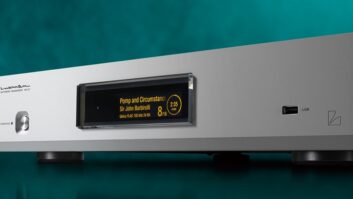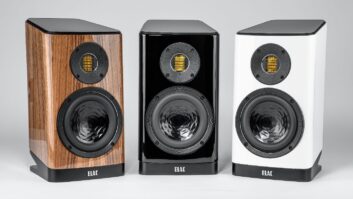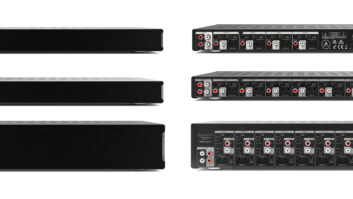As custom electronics installers we are accustomed to wiring lots of RG6 coaxial cable to carry analog or digital video signals. This wire is typically used to transmit the full range of satellite or cable channels throughout the home. In new construction, we have the luxury of pulling exactly the right kind of cable to the precise location for each application in the home. In the retrofit world we dont always have that option; in many cases were forced to use the homes existing cabling infrastructure. So what solutions do we have today for older home clients who want to distribute their DSL or cable modem broadband connection throughout the house?
Over the last few years the most common retrofit home network solution has been to use wireless transmitters and receivers (typically based on the 802.11b/g standards) to transmit data around the home for devices to connect to one another and the Internet. This can be a very good solution (especially well suited for mobile devices like laptops) but wireless is always subject to unpredictable interference. This interference can be a minor annoyance when data is transferred but an unacceptable problem when audio and video are transferred around the home.
The challenge is that most computers, media servers, and receivers are placed in locations where there may only be an available coax port in these older homes. Stepping in to leverage this existing coax cabling is a Los Gatos, California, company called Coaxsys that has developed the TVnet/C Pro line of products that will allow data to coexist with analog or digital TV signals on existing cabling lineseven if these coax lines are daisy chained and not home run to a single central location. The company accomplishes this task by providing a master transmitter (this transmitter is usually located at the router/switch head end), which broadcasts the data packets over the coaxial cable lines at speeds up to 100MB/sec. The receiver, which plugs into the local wall outlet, splits the TV/data signal into the standard RF signal for the television channels and the digital packet signal for the Ethernet-based devices (PC, media server, or receiver).
The elegance of this solution is that you can use the homes robust coax-wired infrastructure to reliably transmit streaming audio and video packets around the home without running additional Cat-5 wire. Once the master transmitter is installed, all of the homes coax jacks are live for both standard cable TV signals and Ethernet-based packet streams. You simply place the Coaxsys receiver at each of the coax ports in the home where you need data access.
Another attractive feature of TVnet/C Pro is that client-based software is not required, which simplifies the installation and avoids software-based compatibility issues. The main caveat to a truly plug n play installation is to make sure the homes existing coax infrastructure is free of data-disruptive amplifiers. While amplifiers outside of the homes master splitter will not disturb the network, amplifiers inside of the homes coax network will pose a problem. Splitters, however, are okay.
Over the years weve tried similar product solutions that allow us to divide the frequency spectrum of phone and power lines to permit the transmission of data. In our experience these solutions have been less satisfactory than the products developed by Coaxsys, because of inherent problems (power spikes, multiple phones) that still exist.
We foresee the Coax product being used in applications such as:
Sonos Installations. While the Sonos amplifiers typically can communicate well to one another over the wireless SonosNet protocolthe distance is typically limited to 30 to 50 feet indoors (which may not be sufficient for many installations). Using the coaxial cable lines as a backbone for these amplifier/decoders eliminates this distance limitation.
Wireless Access Points. In many larger homes a single access point does not provide enough coverage. While wireless range extender products are available we have found that bridging wireless access points across a coaxial backbone is frequently more reliable.
Media PCs, Extenders, or Digital Receivers. All of these devices are typically located next to a television and need a network connection where one usually does not exist. As mentioned previously, wireless bridges often provide less-than-satisfactory results for these audio/video devices whereas a coax backbone provides a much more reliable, robust solution.
We view the Coaxsys TVnet/C Pro line of products as an extension of our IP infrastructure toolkit of products that we carry in our company vans. We always have routers, switches, and wireless access points to leverage a homes broadband connection. Now it makes sense to carry the Coaxsys products as one more way to distribute broadband Internet throughout the home and interconnect Ethernet devices with minimal wire pulling and tone testing. Minimizing labor and maximizing reliabilitythose are elements that can enhance the profits of all of our custom home networked installations.







